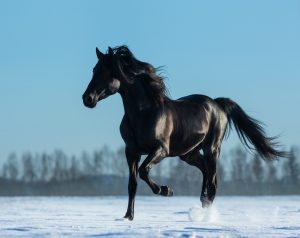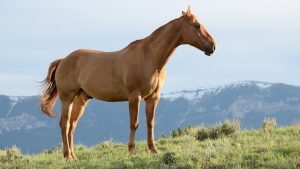HORSE FEEDS AND FEEDING TECHNIQUES
What one keeps on moving is the energy that is derived from the food eaten. Every living thing on earth is naturally born to eat, develop and grow that they may function well to their design in our ecosystem.
Like humans, our horses need a daily diet to get the nutrients it needs to survive daily, lack of food, as well as overeating, result in abnormal body functions that may cause unwanted illnesses. That is why it is very important to know the right amount of food given to the kind of horses that we have as well as knowing the right kind food to feed, and what kind of foods to avoid for our horses’ diet.
You may be wondering what does a horse eat. If you are to think of the natural design of why one exists and how it functions, horses that are herbivores in this matter are naturally designed to consume pasture grass, they love to graze in fresh, succulent and tasty grass plants. But as the availability of good pasture grass continues to diminish, other foods for our horses have been and are continuously being developed that they may somehow live up and adapt to the inevitable changes that are happening in our environment.
Choosing the right food for your horses can save you a lot of dimes by maintaining their health and avoid diseases derived from malnutrition and/or obesity. The right foods that we must feed to our horses are as follows;
RIGHT FOODS FOR HORSES
1. HAY FOR HEALTHY HORSES
Hay comes in various sizes and packaging depends on how it is sold by horse feed store near me or your area and can also be availed online like on amazon. These are the cut grass when they are less greener on any other part of the Pasteur and are a great feed for horses. They usually are sold in bale, pellets or cubes. The main concern on hay is choosing the right type of it that you are to feed your kind of horse. There are two major types of hay, the legume hay, and the grass hay.
WHAT IS LEGUME HAY?
Legume hays comprise a higher amount of protein, minerals, and vitamins than that of grass hays. Examples of these are the alfalfa which the horses love because of its taste, but because of its dense nutrient content, excess consumption of this may result in obesity and upset the gastrointestinal tract of your horses. Another kind of this type is the red clover, it is almost the same taste and nutrients as alfalfa has, but it is prone to dust and molds. Other kinds are the white clover and birdsfoot trefoil.
WHAT IS A GRASS HAY?
Grass hays, on the other hand, is known to be richer in fiber content than that of the legume hays have, but lesser in protein, minerals, and vitamins. Because of this, grass hays have been recommended for mixed feeding and easy keepers. And this is also ideal for small and frequent feeding.
The amount of hay given to horses in a daily consumption may range from 15 to 20 pounds for the average thousand-pound horse. This depends on the horse’s weight.
2. HORSE FEED DELICIOUSLY WITH GRAINS
Grains are typically known to be a good source of calories and is much needed to boost more energy for horses that are designed to move vigorously such as those involved in race events, pregnant or nursing mares and horses used on ranch works. A small number of grain concentrates are recommended.
TYPES OF GRAINS FOR HORSES
Grains that are fed to horses the most include rice bran, barley, oats, and corn. But there are other tasty grain options as well like Soybean, Beet Pulp, and Molasses.
A. STABILIZED RICE BRAN
Rice bran is the brown covering of the rice for humans that are removed as its by-product in the milling process. This by-product of the rice is stabilized in the process of heating before feeding it to horses and prevents the occurrence of rancidity and digestive problems. The stabilized rice bran is known for its high-fat content that amounts to 20%. Stabilized rice bran is convenient as energy and essential fatty acid source in the diets of show and performance horses as well as young growing horses. Finally, stabilized rice bran should be considered as an additive to a horse’s diet and not a replacement for essential vitamin and minerals found on grass pasture.
B. BARLEY
Barley is a less palatable type of grains for the horses and is usually mixed with other grains. It is known to be less in fiber compared to oats.
C. OATS
Oats are more preferred than barley when it comes to caloric supplements, and it is tastier to horses. Oats are considered as one of the healthiest grains in the world. They are known to be gluten-free whole grain and a great source of important vitamins, minerals, fiber, and antioxidants that vital to the body’s health. Studies show that oats have many health benefits including reducing the risk of heart disease, aids in weight loss, boosts digestion and many more.
D. CORN
Corns are generally cultivated for the production of commercial products such as ethanol and biofuels, some whiskey, baking products and more. Sweet corns are for human consumption and the field corns are processed for animal feeds. Corn is high in carbohydrates and packed with fiber, vitamins, and minerals. It’s also relatively low in protein and fat. Corn can be fed on the cob, as shelled whole corn, cracked corn, steamed rolled corn or ground crushed corn. It is best to meet the daily energy requirement of active horses.
E. SOYBEAN
Extruded soybeans provide an excellent source of balanced essential amino acids, and are high in lysine. Soybeans are also known to have high levels of protein and fat. They are also a great source of phosphorus, low in fiber, and are highly digestible when processed properly for horse consumption otherwise, the horse may experience indigestion especially when eaten in raw, so do not attempt to feed your horses with raw soybeans. To get the most benefit for your horse, consider what type of soy you are feeding your horse. For the greatest benefit to your horse, make sure you are feeding full-fat extruded soybeans. Soybean meal is the most common form of soy used in horse feeds. Other forms of soybeans that can be fed to horses are roasted soybeans, micronized soybeans, soybean flour, and soybean flakes
F. BEET PULP
Beet pulp is another great mix for your horse feeds with its high-fiber, high-energy and calcium nutrient content. It’s common practice to soak beet pulp to make it more palatable and reduce the risk of choking before feeding to your horses.
G. MOLASSES
Molasses contains sugar that is a direct energy source of so-called ‘fast energy’ for horses. If your horse is into performing loads of activities, it is necessary to include sugar in the horse’s diet as a source of energy. Molasses is often used in horse feed to boost energy and is also a good source of potassium.
What is the best grain for your horses? All of the above-mentioned types of grains are good for your horses. Remember that grains are recommended as mixed addition to hay as part of their daily diet. And must be given only in small amount or depending on the intensity of exerted energy they are doing in every activity that they have.
Aside from the hays and grains, another type of food that your horse loves and needs in their daily nutritional diet is a variety of fresh fruits!
3. FRUITS AND VEGGIES FOR A HORSE TREAT!
Yes! You read it right. Fruits are considered treats for horses. This type of palatable horse feeds is often given as treats to horses. Fruits are also used as reward for doing a good job. Proven over years, the horses’ favorites are apple and carrots.
Here are some of the best choice list of foods and vegetables that you can feed to your horses.
- Apricot
- Banana
- Blackberry
- Cantaloupe
- Coconut
- Grapes
- Orange
- Peaches
- Pear
- Pineapple
- Plum
- Raisins
- Strawberry
- Watermelon
- Beet Root
- Carrot
- Celery
- Cucumber
- Parsnip
- Pumpkin
- Snow Peas
- Swede
- Turnip
It is best that you cut these fruits and vegetables into smaller pieces before feeding it to your horse to avoid chocking.




